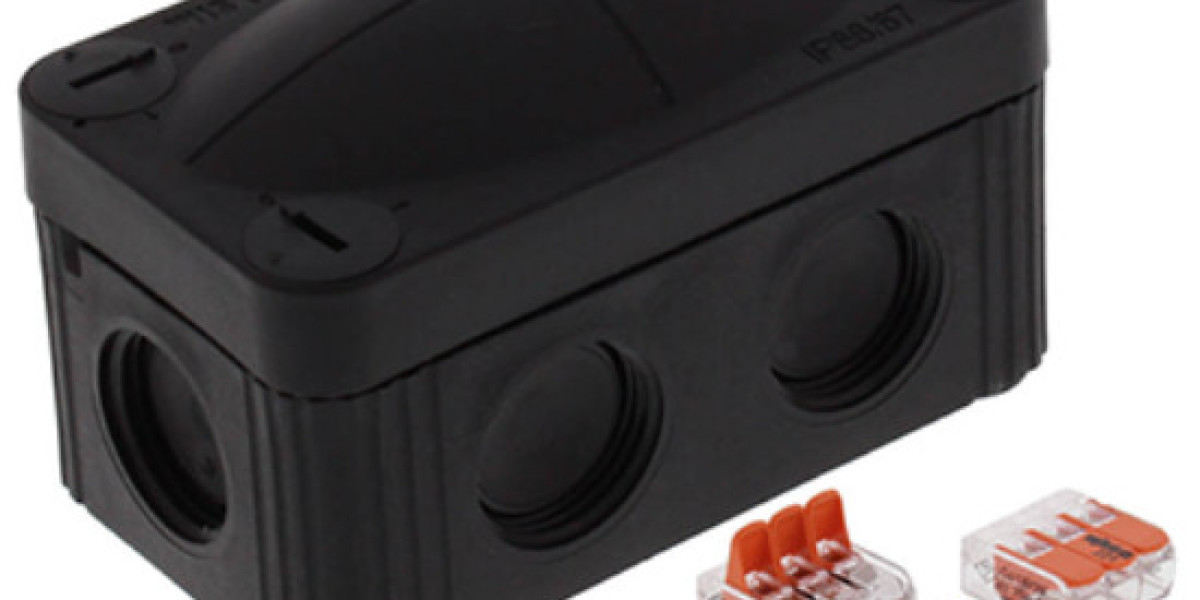When it comes to electrical installations, safety and organisation are paramount. One essential component that ensures both is the outside junction box. Designed to protect electrical connections from environmental factors, outside junction boxes are widely used in residential, commercial, and industrial settings. Whether you’re working on outdoor lighting, garden features, or external power supplies, a junction box provides the security and durability needed to keep connections safe.
In this blog, we’ll explore what an outside junction box is, why it’s important, the types available, installation tips, and what to consider before choosing one.
What Is an Outside Junction Box?
An outside junction box is a weatherproof enclosure used to house and protect electrical connections. Its primary purpose is to prevent accidental contact with live wires and to shield connections from moisture, dust, and other environmental elements. Typically made of plastic or metal, these boxes come with sealed covers or lids that ensure durability and protection in outdoor settings.
By neatly organising connections, outside junction boxes also make electrical systems easier to inspect and maintain.
Why Are Outside Junction Boxes Important?
Installing an outside junction box offers several key benefits:
Safety – Protects against accidental shocks by enclosing live connections.
Durability – Shields wires and terminals from rain, dust, dirt, and UV exposure.
Organisation – Keeps electrical connections tidy, preventing clutter and confusion.
Compliance – Meets wiring regulations that require electrical joints to be contained in an enclosure.
Ease of Maintenance – Simplifies future inspection, repair, or extension of electrical circuits.
In essence, outside junction boxes aren’t just about protecting the system; they also protect people and property.
Applications of Outside Junction Boxes
Outside junction boxes are versatile and suitable for many different applications, including:
Garden and Landscape Lighting – Protects connections for pathway or decorative lights.
Outdoor Security Systems – Ensures reliable power for CCTV cameras and alarms.
External Power Supplies – Provides a safe connection point for outdoor sockets or equipment.
Industrial and Commercial Installations – Used in factories, warehouses, and external building areas.
Renewable Energy Systems – Often used in solar or wind installations to secure wiring outdoors.
Wherever electrical connections need protection from the elements, a junction box is the solution.
Types of Outside Junction Boxes
There is no one-size-fits-all when it comes to junction boxes. Here are the most common types:
- Plastic Junction Boxes
Lightweight, non-corrosive, and resistant to water.
- Ideal for most household outdoor applications.
Metal Junction Boxes
Strong, durable, and heat-resistant.
Best for heavy-duty or industrial applications.
Weatherproof Junction Boxes
Specifically designed to withstand rain, snow, and UV rays.
Includes seals and gaskets for extra protection.
Underground Junction Boxes
Used for garden and landscaping projects where cables are buried underground.
Provides long-term durability against soil and moisture.
By selecting the right type, you ensure safety, efficiency, and longevity in your installation.
Key Features to Look for in an Outside Junction Box
When choosing the right outside junction box, consider the following factors:
Material – Plastic for residential use or metal for industrial strength.
Ingress Protection (IP) Rating – Indicates resistance to water and dust. Look for IP65 or higher for outdoor use.
Size – Ensure it has enough space for wires, connectors, and safe operation.
Mounting Options – Wall-mounted, surface-mounted, or flush-mounted, depending on your project.
Ease of Access – Removable covers and secure fastenings make future maintenance easier.
read more:- https://electricalwholesaler01.hashnode.dev/a-complete-guide-to-outside-junction-boxes-safety-durability-and-installation








